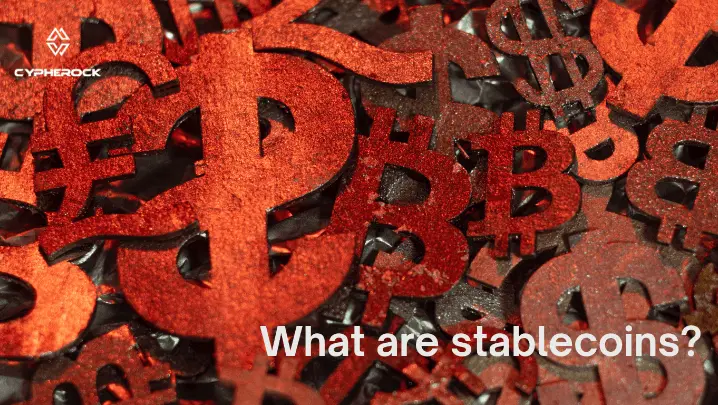

Stablecoins are a new type of cryptocurrency that are designed to maintain a constant value relative to fiat currency, such as the US Dollar, Euro, or any other currency not backed by commodities such as gold and silver, but rather intended to be legal tender. They are digital tokens that are pegged to a stable asset and unlike other cryptocurrencies, stablecoins are not designed to be subject to the fluctuations of the market.
Fiat currencies, which are issued and regulated by central governments or entities, are generally considered stable and non-volatile. However, they may lack transparency and control, as they are controlled by a central entity, which can potentially undermine trust in these currencies. Cryptocurrencies overcome the flaws of transparency by proposing an open and identity-less distributed system but, cryptocurrencies tend to lack price stability due to various reasons. Stablecoins intend to take the best of both worlds by maintaining the same level of trust as cryptocurrencies while ensuring price stability. Here is why stablecoins are important to the financial ecosystem:
The most common type of stablecoin is a “Fiat-collateralized” stablecoin. This type of stablecoin is backed by a government-issued fiat currency, such as the US Dollar. This type of stablecoin is designed to always maintain a 1:1 parity with the underlying asset, in this case the US Dollar and maintain a reserve serving as collateral to assure the stablecoin value. These are regulated by centralized or independent entities. Examples include Tether (USDT) and USD Coin (USDC).
Crypto-collateralized stablecoins are backed by other cryptocurrencies such as Ethereum or Bitcoin. The value of the stablecoin is then linked to the value of the underlying cryptocurrency, with the reserve generally held higher than the stablecoin value issued to account for the volatile nature of crypto. They are usually decentralized and issued on a blockchain. An example is DAI by MakerDAO.
These are pegged to values of commodities such as petroleum, real estate, industrial and precious metals such as steel and gold among others. They hold reserves of such commodities. Examples include Paxos Gold (PAXG), Tether Gold (XAUT), GCoin (XGC) Darico (DEC).
These are non-collateralized stablecoins that are not backed by any assets and instead rely on algorithmic mechanisms to maintain price stability. So, they may or may not hold reserves. Examples include Carbon (CUSD) and Reserve (RSV).
In choosing each of these, a point of consideration is the required balance between stability and volatility as well as centralization and decentralization. A link to centrally regulated currencies like USD in fiat-collateralized stablecoins allows some central body interference. On the other hand, some stablecoins are not entirely fiat-backed, but have a mix of different liquid entities similar to your mutual fund portfolio, in banking terms. Similarly, algorithmic stablecoins can be considered predominantly decentralized, but have the drawback of coping up with the rapidly changing market.
Other than these types of stablecoins, there are many new types of stablecoins appearing in the market. For example, HLUSD issued by the layer 1 chain HeLa Labs is backed by on-chain assets, which can be verified through transparent blockchain explorers.
In conclusion, stablecoins offer investors, businesses, and individuals a reliable store of value, cost-effective global transfers, and a hedge against economic uncertainty and currency volatility. Overall, stablecoins offer users the stability of a fiat currency, with the added benefits of quick transfers, low fees, and increased privacy and security. As such, they provide a viable alternative to traditional fiat currencies and are gaining traction in the cryptocurrency space. As the technology continues to develop, stablecoins could become increasingly popular for those looking for a safe and reliable form of investment.

Start securing your crypto journey today—visit Cypherock X1 to learn more.
Connect with us:
Twitter: @CypherockWallet
Telegram: Join the Community
